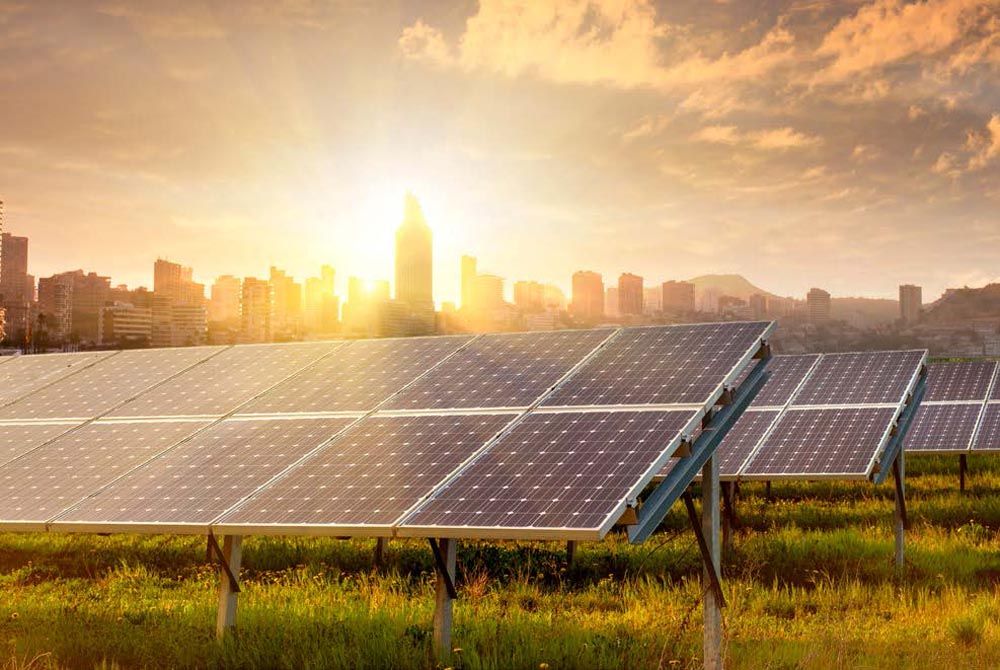For Vesconite Bearings, which already had a 65 kW test solar solution as well as a diesel-generating solution, the continued sustainability of the company required the investment in an expanded solar power solution to supply a greater proportion of its daylight energy requirements.
South Africa has an abundance of sunshine with more than 2,500 hours of sunshine a year and solar-radiation levels between 4.5 and 6.5 kWh/m2 per day. In the Free State, the province in which Vesconite Bearings factory is located, compressed natural gas must be trucked in, making it similar in price to diesel.
Crabb said solar energy, by far, is the most logical alternative energy choice for the area.
“The region is flat and dry, so hydro is not a possibility. There are no prevailing winds for most of the year, making wind energy a non-starter. Thus, none of these options are practical or cost effective. As such, the sun is the preferred and most reliable source of energy that can be implemented by individual companies with ease,” he added.
As of mid-November 2023, Phase I of the project was 80 percent complete, with the installation of steelwork on concrete slabs to support 325 kVA of solar panels. Simultaneously, Phase II is underway, encompassing the installation of an additional sub-station, the installation and commissioning of two generators, inverters with a capacity of 700 kVA, and a 500 kVA uninterrupted power supply (UPS) system.
According to Crabb, “Making the sub-station live is a significant step forward, with approximately 25 percent of Phase II already completed.”
The completion of Phases I and II was targeted for the end of 2023, contingent on timely equipment deliveries from suppliers. Phase III aims to double the solar capacity by an additional 325 kVA. Challenges in steel supply may influence the timeline, but Vesconite Bearings remains committed to its sustainability goals.
Solar Power Outlook Here in the StatesThe U.S. Energy Information Admninistration (EIA) forecasts that the United States will generate 14 percent more electricity from solar energy than from hydroelectric facilities in 2024, according to its Short-Term Energy Outlook (STEO). This forecast is driven by continued growth in new utility-scale and small-scale solar facilities. For the first time in September 2022, the United States had more solar-generated electricity than hydroelectric generation on a monthly basis, according to Electric Power Monthly. That month, U.S. solar power plants and rooftop solar generated about 19 billion kilowatthours, (kWh) compared with 17 billion kWh from U.S. hydropower plants. Solar power outpaced hydropower again in summer 2023 due to exponential growth in installed solar capacity. From 2009 to 2022, installed solar capacity increased at an average rate of 44 percent per year, and installed hydroelectric capacity increased by less than 1 percent each year. EIA expects annual solar generation to surpass annual hydropower generation in 2024 for the first time. In 2019, annual wind generation surpassed annual hydropower generation. The growth of U.S. solar and U.S. wind generation are following a similar pattern, both largely following growth in installed capacity. (eia.gov) |

Additionally, consideration is being given to purchasing a 1 MW battery system, enabling the storage of solar energy for peak consumption times during the night. This investment aligns with Vesconite Bearings’ vision for its ‘lights-out’ facility, intended to operate 24/7 for large-volume order production, circumventing challenges posed by load-shedding from South African electricity provider Eskom.










 Power Transmission Engineering is THE magazine of mechanical components. PTE is written for engineers and maintenance pros who specify, purchase and use gears, gear drives, bearings, motors, couplings, clutches, lubrication, seals and all other types of mechanical power transmission and motion control components.
Power Transmission Engineering is THE magazine of mechanical components. PTE is written for engineers and maintenance pros who specify, purchase and use gears, gear drives, bearings, motors, couplings, clutches, lubrication, seals and all other types of mechanical power transmission and motion control components.